The ninth month of the Islamic lunar calendar is the holy month of Ramadan, which began for Muslims worldwide on March 10. During this month, Muslims abstain from eating and drinking during the day, an act of penance that teaches self-control, reinforces one’s faith and helps one become more mindful of God.
There are about 60,000 Muslims in Taiwan, many of them migrant laborers or students from Southeast Asia, the Middle East or Africa. Some too, are Taiwanese.
Yahya, a 29-year-old civil engineer, has spent 10 years living in Taiwan. He is an Iraqi who initially traveled to the US to study Mandarin Chinese and where he later obtained his engineering degree.
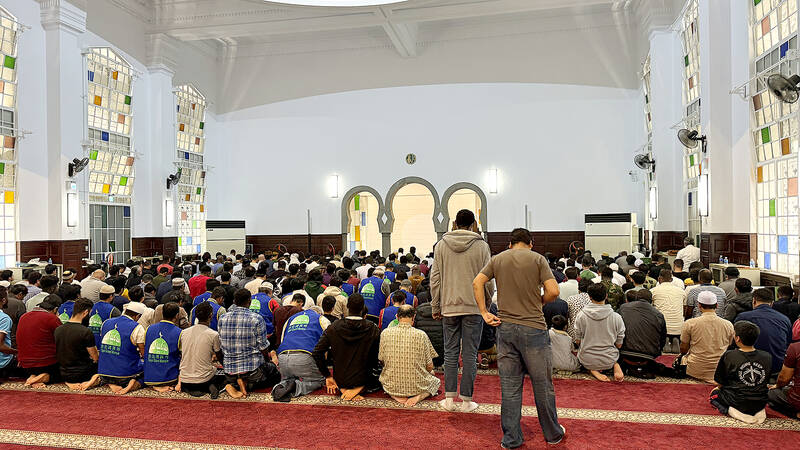
Photo: Bing Wang
Getting used to his new environment was challenging because he knew little about Taiwan before he arrived. Luckily, he discovered a supportive group at the Taipei Grand Mosque, where he now regularly attends prayers and helps out whenever he has free time.
TAIWAN’S LARGEST MOSQUE
After the Chinese Civil War, many Chinese Muslims migrated to Taiwan with the Chinese Nationalist Party (KMT) in 1949. They lobbied high-ranking KMT officials to construct a mosque because they needed a place of prayer. The building was finished in April, 1960 with assistance from the government, a loan from the Bank of Taiwan and donations from Jordan and Iran. In 1999, the government of Taipei City recognized the mosque as a historic site.
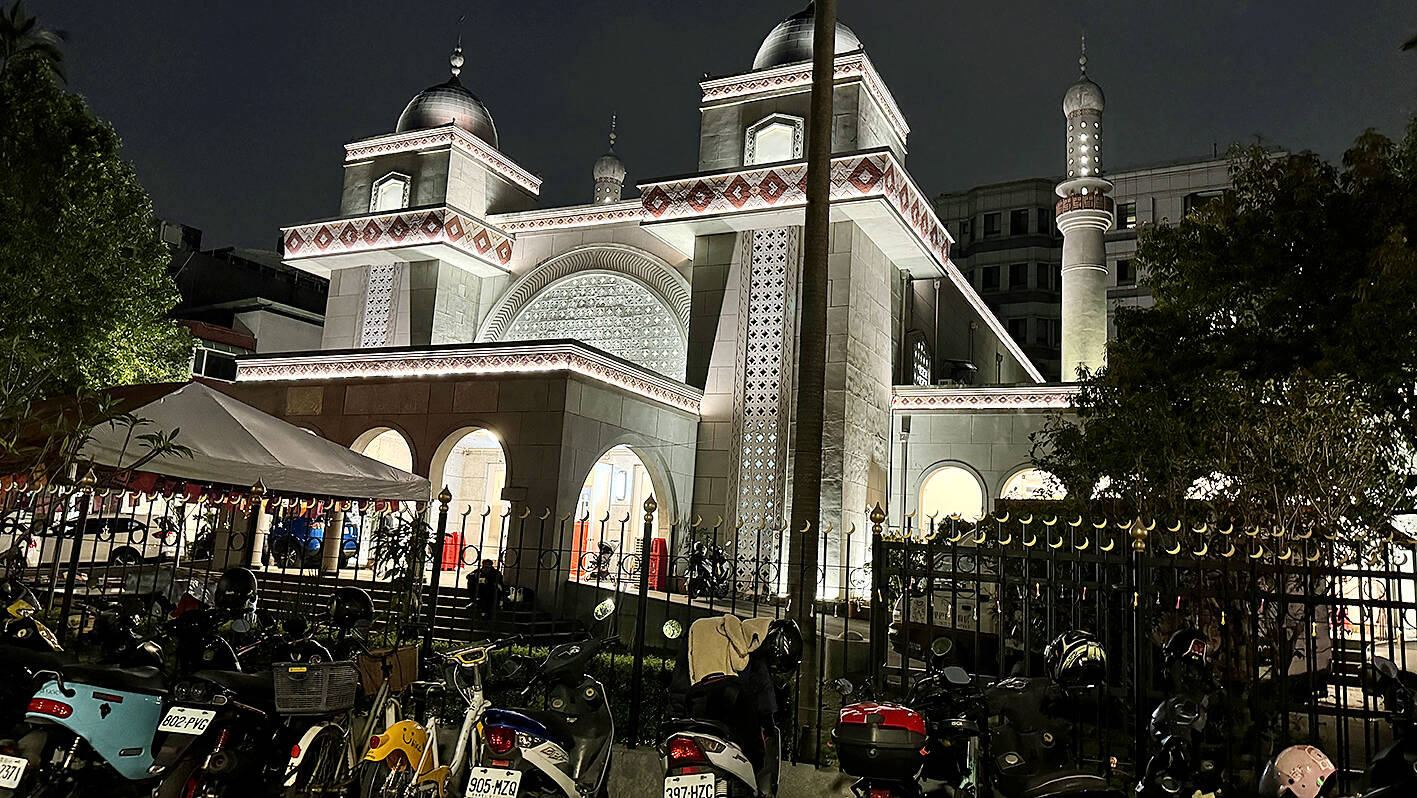
Photo: Bing Wang
Every Friday afternoon, prayers are held in the Taipei Grand Mosque (台北清真寺), and hundreds of Muslims attend. The mosque also hosts daily Suhoor and Iftar meals before sunrise and sunset during the holy Islamic month of Ramadan.
Yaser Cheng (鄭泰祥), the mosque’s chairman, says nearly 600 people from 25–30 nations come for the Iftar meal every night. For example, Shaheen, a Somali graduate student at National Taiwan Ocean University in Keelung, often travels an hour to get to the Taipei Grand Mosque.
During Ramadan, Yahya is one of many who donate their time at the mosque to set up tables and chairs, serve food and clean up after meals. He says, “The mosque has done a fantastic job of creating a sense of community here.”

Photo: Bing Wang
The mosque offers weekly classes for Muslim children as well as online resources — the official website details the locations of Halal restaurants, and lists places where Muslims are specifically allowed to worship.
However, Islamophobia is not absent from Taiwan. Patu, an Indonesian migrant construction worker, says his wife often gets stares from Taiwanese because she wears a hijab. He recounts a time overhearing people saying she might have a bomb hidden underneath it.
Just last month, Minister of Labor Hsu Ming-chun (許銘春) made comments that were deemed racist, asserting Taiwan should attract migrant workers from northeastern India because “their skin color and dietary habits are closer to [Taiwanese]” as they are mostly “Christians.” Muslims actually account for 14 percent of India’s population, compared with just 2.3 percent of the population that subscribe to Christianity. The minister faced criticism for the remarks and issued an apology days after.

Photo: Bing Wang
TOLERANCE IN TAIPEI
Notwithstanding some episodes of xenophobia, Imam Ibrahim Chao (趙錫麟) of the Taipei Grand Mosque believes Muslims all over the world praise Taiwan. He says Taiwan has, for the most part, done a good job of giving Muslims a secure environment to practice their faith.
In 2022, The Halal in Travel Awards (HIT) named Taiwan the most Muslim-inclusive destination for a non-Organization of Islamic Cooperation (OIC) country. The 2023 Global Muslim Travel Index ranked Taiwan the third-most Muslim-friendly non-OIC destination. Taiwan’s capital Taipei won the “Most Promising Muslim-friendly City Destination of the Year (non-OIC)” award in the same Index.

Photo Courtesy of Taipei Grand Mosque
The Taipei Grand Mosque frequently organizes fundraisers for Muslims facing humanitarian disasters worldwide. The mosque offered prayers for the earthquake victims and gave tens of thousands of dollars to those in need when a 7.8-magnitude earthquake hit Turkey and Syria in February last year, killing 50,000 people. A market has been organized on its front lawn, selling food and other items to collect money for Palestinians during the ongoing humanitarian crisis in Gaza, where millions of people are currently facing famine.
Donations were sent to non-governmental organizations, where they were used to purchase food, medical supplies and pay for other needs.
Yahya, who helped to arrange the fundraising campaign, says that these fundraising events help bring Taiwan’s Muslim community together. They inform Muslims that in addition to praying, they are here to support their Muslim friends worldwide.
“It’s great that the mosque is attempting to find more ways to introduce the Muslim community to Taiwanese people,” he says.
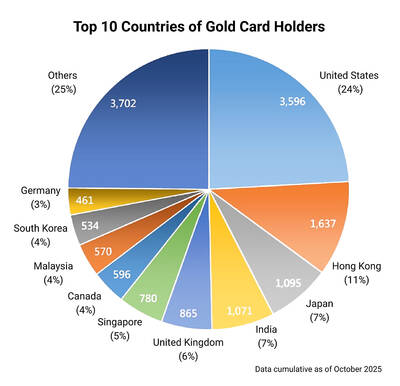
Seven hundred job applications. One interview. Marco Mascaro arrived in Taiwan last year with a PhD in engineering physics and years of experience at a European research center. He thought his Gold Card would guarantee him a foothold in Taiwan’s job market. “It’s marketed as if Taiwan really needs you,” the 33-year-old Italian says. “The reality is that companies here don’t really need us.” The Employment Gold Card was designed to fix Taiwan’s labor shortage by offering foreign professionals a combined resident visa and open work permit valid for three years. But for many, like Mascaro, the welcome mat ends at the door. A
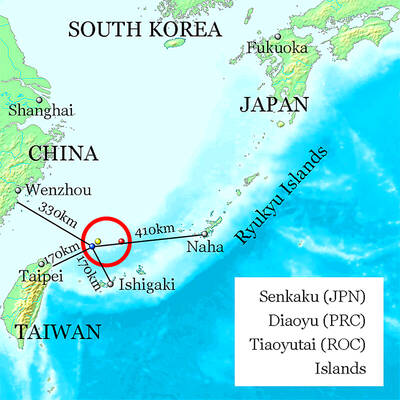
Last week gave us the droll little comedy of People’s Republic of China’s (PRC) consul general in Osaka posting a threat on X in response to Japanese Prime Minister Sanae Takaichi saying to the Diet that a Chinese attack on Taiwan may be an “existential threat” to Japan. That would allow Japanese Self Defence Forces to respond militarily. The PRC representative then said that if a “filthy neck sticks itself in uninvited, we will cut it off without a moment’s hesitation. Are you prepared for that?” This was widely, and probably deliberately, construed as a threat to behead Takaichi, though it
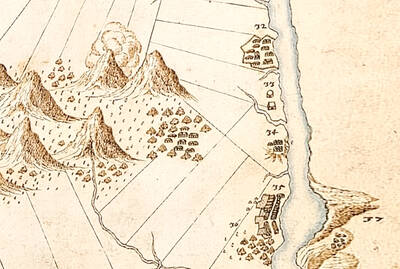
Nov. 17 to Nov. 23 When Kanori Ino surveyed Taipei’s Indigenous settlements in 1896, he found a culture that was fading. Although there was still a “clear line of distinction” between the Ketagalan people and the neighboring Han settlers that had been arriving over the previous 200 years, the former had largely adopted the customs and language of the latter. “Fortunately, some elders still remember their past customs and language. But if we do not hurry and record them now, future researchers will have nothing left but to weep amid the ruins of Indigenous settlements,” he wrote in the Journal of
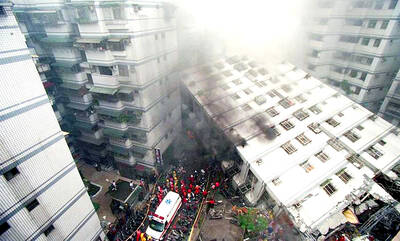
If China attacks, will Taiwanese be willing to fight? Analysts of certain types obsess over questions like this, especially military analysts and those with an ax to grind as to whether Taiwan is worth defending, or should be cut loose to appease Beijing. Fellow columnist Michael Turton in “Notes from Central Taiwan: Willing to fight for the homeland” (Nov. 6, page 12) provides a superb analysis of this topic, how it is used and manipulated to political ends and what the underlying data shows. The problem is that most analysis is centered around polling data, which as Turton observes, “many of these